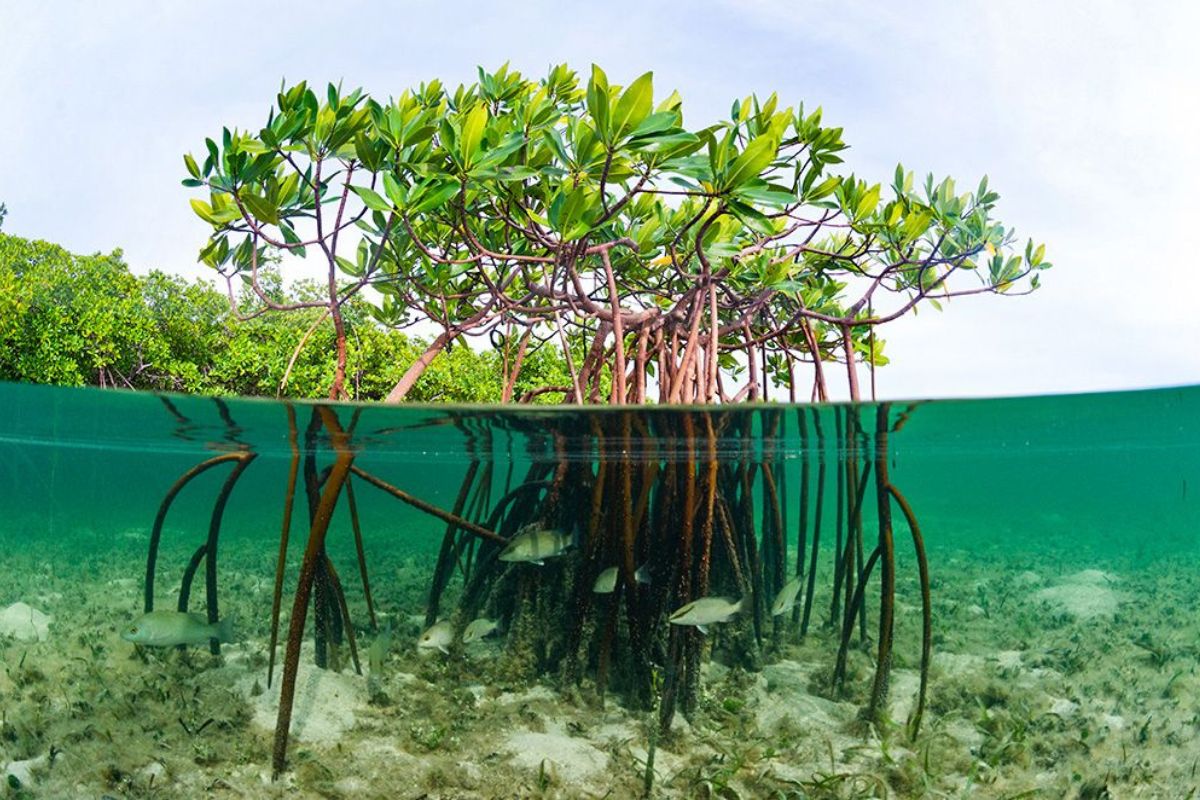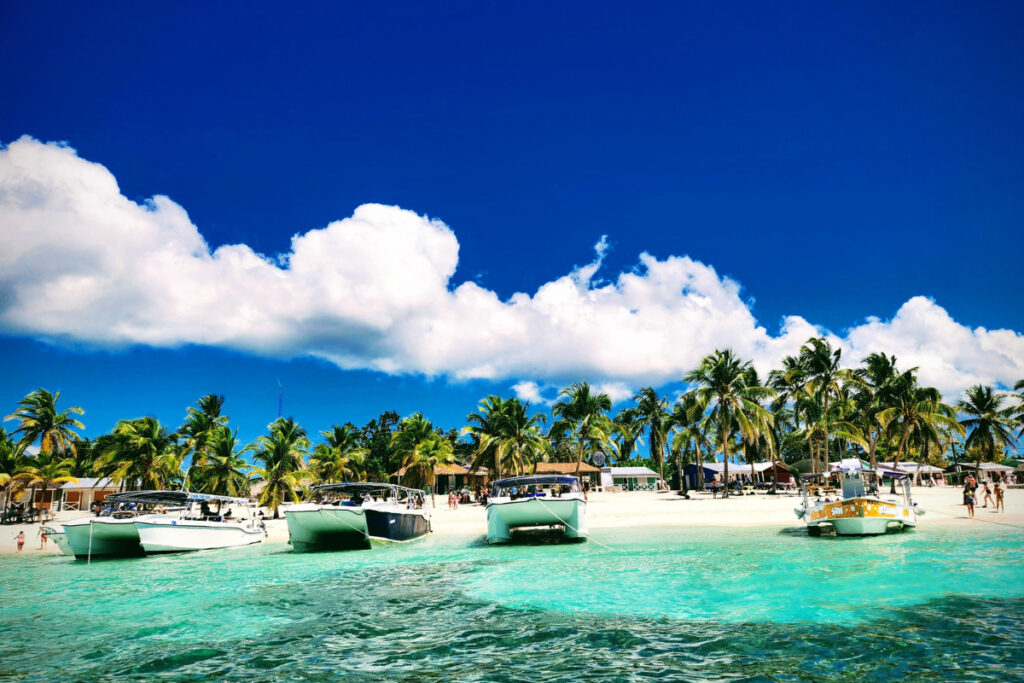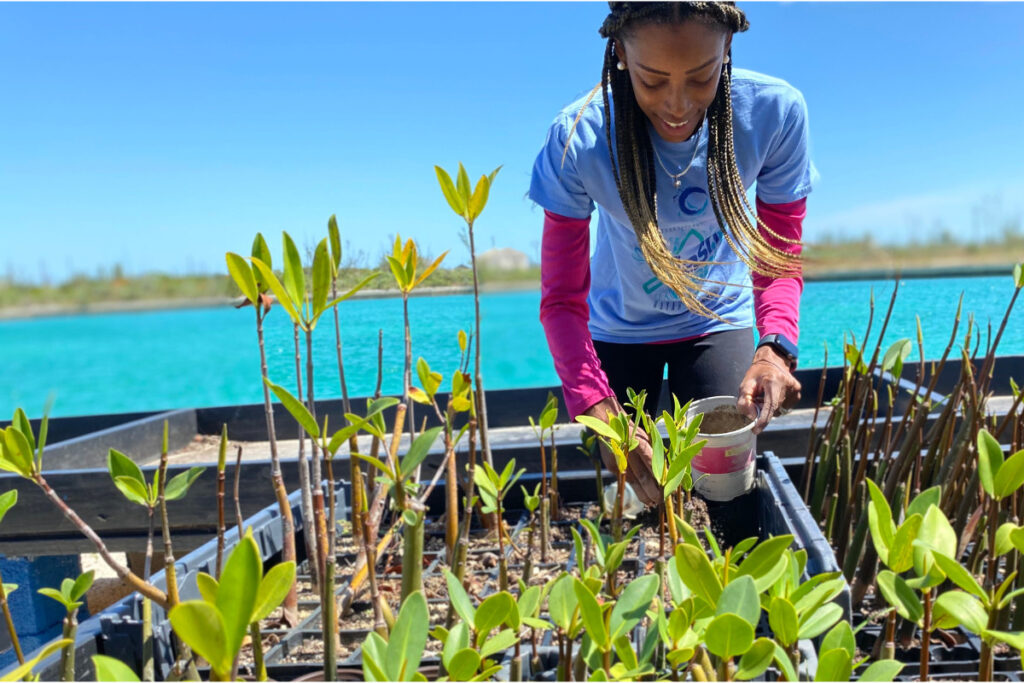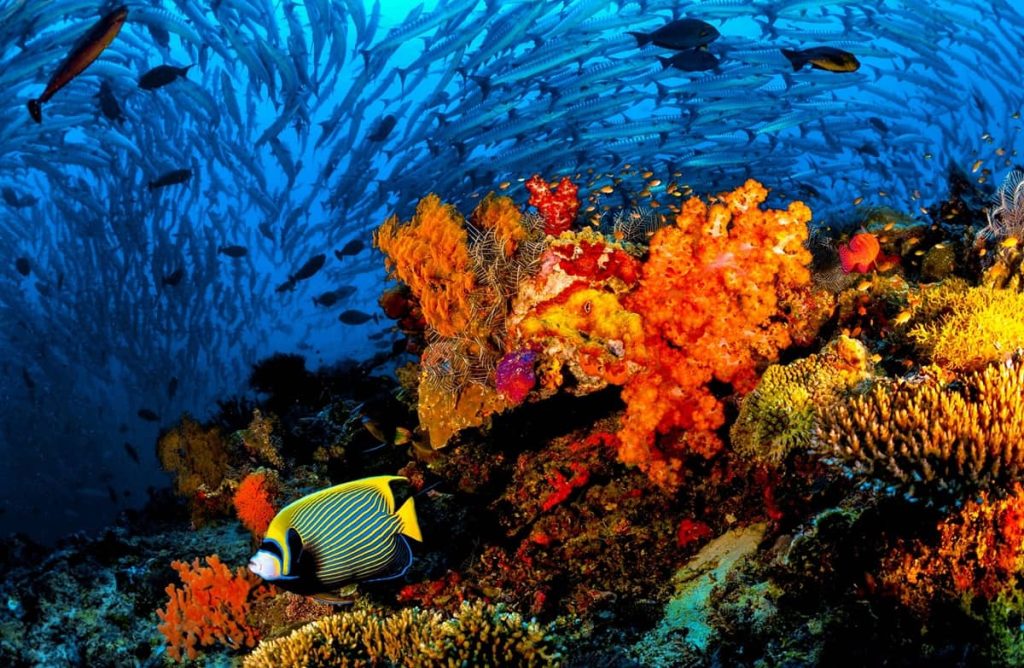Mangrove forests are often misunderstood and undervalued ecosystems. Sometimes perceived as “wastelands”, these coastal wetlands are frequently cleared to make way for pretty beaches, resorts, fish farms or other developments when, in fact, their location bridges land and sea allowing mangrove forests to protect coastal communities from crashing waves, storms, and flooding. In addition, their dense root structures trap muddy soil, slowing coastal erosion and preventing runoff from deteriorating the water quality of nearshore habitats like coral reefs. The mangrove ecosystem also forms a rich and productive habitat by providing a nursery, home, and feeding ground to many fish, insects, and birds. Both mangroves and coral reefs are crucially important for local economies, creating income for tourism, fisheries and pharmaceutical industries. Moreover, mangroves annually store carbon at a rate ten times greater than mature tropical forests. Mangroves also store three to five times more carbon per equivalent area than tropical forests.
Despite their incredible benefits, mangroves are in jeopardy. Over 20% of mangroves are estimated to have been lost globally over the past 40 years. According to newly completed global maps from the Global Mangrove Watch (GMW) updated to 2020, there are 147,000km2 of mangroves in the world, which is approximately 3 times the size of the Dominican Republic. Since 1996, there have been 5,245km2 net losses and the current global rate of loss is estimated at 66km2 or 0.04% of all mangroves per year.
Direct losses are driven by agriculture, aquaculture and rapid urban expansion. Indirect pressures including changing sedimentation rates, rising sea levels, changes in temperature and precipitation levels, and increases in harmful pollutants are usually exacerbated by human actions. Multiple threats often interact to cause an even greater impact.
Mangroves in the Wider Caribbean region (Gulf of Mexico, Caribbean Sea and North Brazil Shelf Large Marine Ecosystems) comprise close to 26% of the global mangrove cover and, regrettably, almost a quarter of them were lost in the past 25 years. Reversing these losses by protecting and restoring mangroves will contribute to global conservation targets which include 1) effective conservation and management of at least 30% of the world’s lands, inland waters, coastal areas and oceans with emphasis on areas of particular importance for biodiversity and ecosystem functioning and services; and 2) have restoration completed or underway on at least 30% of degraded terrestrial, inland waters, and coastal and marine ecosystems.
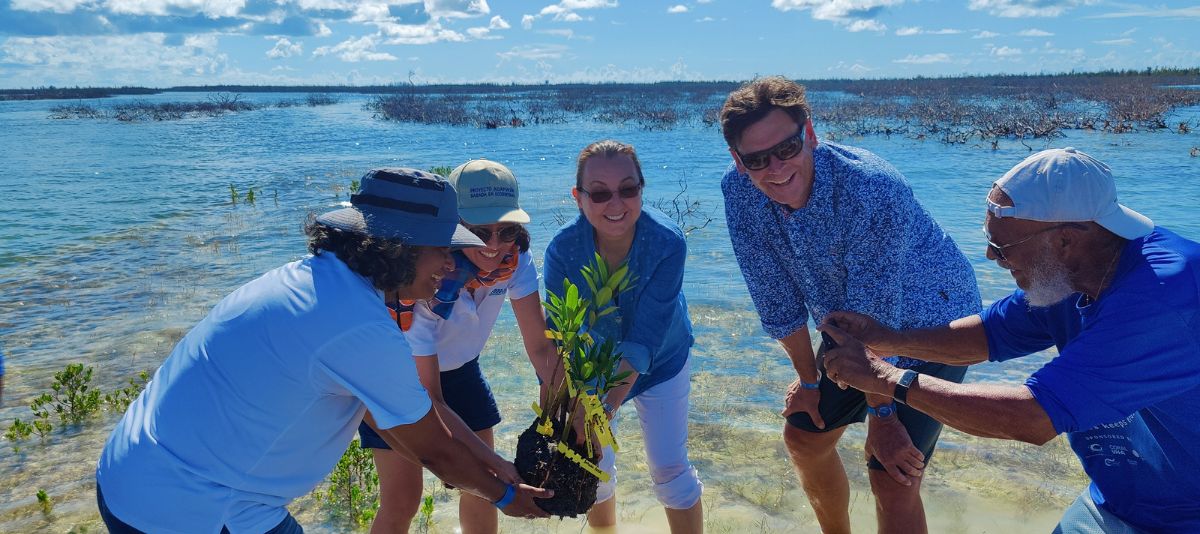
Preserving Mangroves for a Sustainable Future
In the Caribbean region, where 12% of global mangrove forests reside, recent estimates show that Caribbean mangroves have been reduced by almost 7000 km2 in only three decades (1980-2010). At these rates, the Caribbean’s mangroves could disappear in the next 60 years.
At the Caribbean Biodiversity Fund (CBF), we provide continuous funding for conservation and sustainable development in 15 countries within the region. Our sustainable financing programs and projects aim to protect the Caribbean’s vital natural resources at scale for generations to come. To date, the CBF has disbursed USD 27.6 million in funding for 26 projects with a mangrove restoration component in 9 Caribbean countries.
Mangroves are an important natural barrier that reduce the high vulnerability of the Caribbean region’s coastlines during hurricanes, with an estimated value of USD 23,000 to 45,000 per hectare. With storm intensity and frequency increasing, these coastal trees’ natural defense system is crucial to reducing the regional impact of climate change. Studies show that Caribbean countries are up to seven times more likely to experience a natural disaster than other states, and when one occurs, it can incur as much as six times more damage. The last seven consecutive Atlantic hurricane seasons have seen a storm develop before the official start of the season. The 2017 season was the costliest hurricane season on record, while 2020 was the most active season on record. In the Caribbean region, Hurricane Maria damages cost USD 931 million in Dominica, Hurricane Irma cost USD 10 billion across the Caribbean, and Hurricane Dorian cost USD 3.4 billion in The Bahamas. That’s over USD 14 billion in hurricane damages in just 2 years!
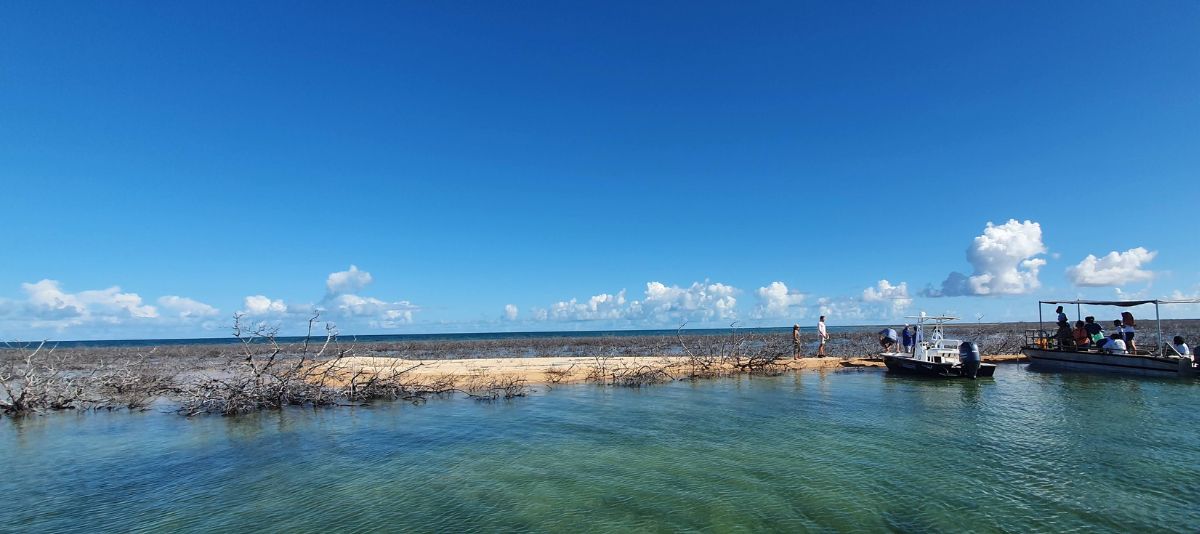
Restoration Efforts and the Road Ahead
Five years later, The Bahamas is still recovering from the passage of the category 5 hurricane which leveled Grand Bahama and Abaco devastating the islands’ red mangrove forests. Dubbed the worst natural disaster in the nation’s history, Hurricane Dorian damaged 22% of mangroves in Grand Bahama and 14% of mangroves in Abaco. Restoration efforts are underway by several organizations including the Bahamas Protected Areas Fund (BPAF), a CBF partner national conservation trust fund. The CBF provided USD 1.26 million in funding to the BPAF to aid in the country’s recovery which included mangrove restoration which resulted in the mapping of 2,145 hectares of damaged mangroves and planting of over 20,000 mangrove seedlings.
Beyond coastal protection, mangroves also help secure livelihoods and food security for communities around the world. Mangroves in the Mesoamerican Reef Region (MAR) and the Wider Caribbean are the economic foundation of over 134 million people living in the coastal regions. In the Caribbean, mangroves interact with two of the region’s most important industries: fisheries and tourism, which generate USD 5 billion and USD 47 billion in revenue, respectively.
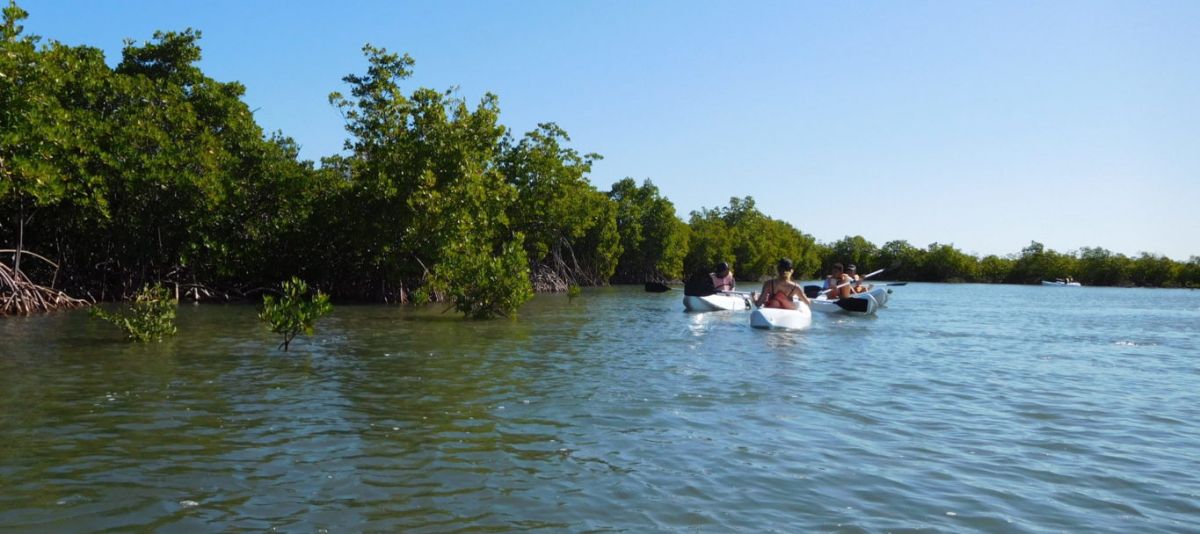
In the fishing community of Montecristi (Dominican Republic), a project funded by the CBF’s Ecosystem-based Adaptation (EbA) Facility benefited 198 fishermen who depend on the surrounding mangroves for their catch. Mangroves grow best in water that is a mix of saltwater and freshwater; however, in Montecristi there was no freshwater entering the ecosystem. A recanalization intervention implemented by the Dominican Institute for Integrated Development (IDDI) restored the water supply allowing the return of fish and other marine life to the area. An additional 1,075 people also benefited from other activities and programs developed by the project.
World Wetland Day 2024: A Call to Action
Today marks World Wetland Day 2024 which is being observed under the theme: ‘Wetlands and Human Wellbeing’. It’s essential to recognize the intrinsic value of wetland ecosystems. Coastal ecosystems, particularly mangroves, are interconnected and interdependent, contributing to sustainable development and human wellbeing. Between 2010 – 2020, the rate of mangrove loss fell by 23% according to The World’s Mangroves, 2000–2020 from the Food and Agriculture Organization of the United Nations (FAO). This decline in global mangrove loss is a signal of hope. Let us further commit to preserving and conserving mangroves and other wetlands for the benefit of future generations. Together, we can make a significant impact on the global conservation targets set for the years ahead.
Resources
- Leal, Maricé and Spalding, Mark D (editors), 2022 The State of the World’s Mangroves 2022. Global Mangrove Alliance
- Mapping Ocean Wealth in the Caribbean
- Rull, V. 2022. Responses of Caribbean mangroves to Quaternary climatic, eustatic and anthropogenic drivers of ecological change. Plants 11, 3502.
- Ötker I., Srinivasan K. Bracing for the Storm. March 2018.
- Post-Disaster Needs Assessment Hurricane Maria (18 Sep. 2017)
- Global Models of Ocean Wealth

